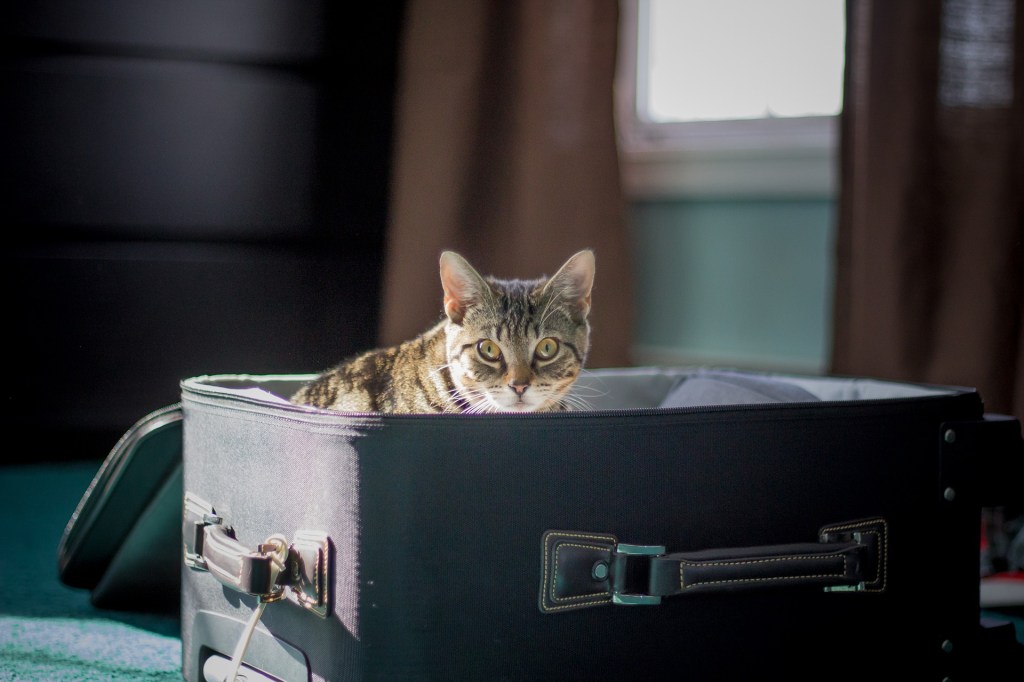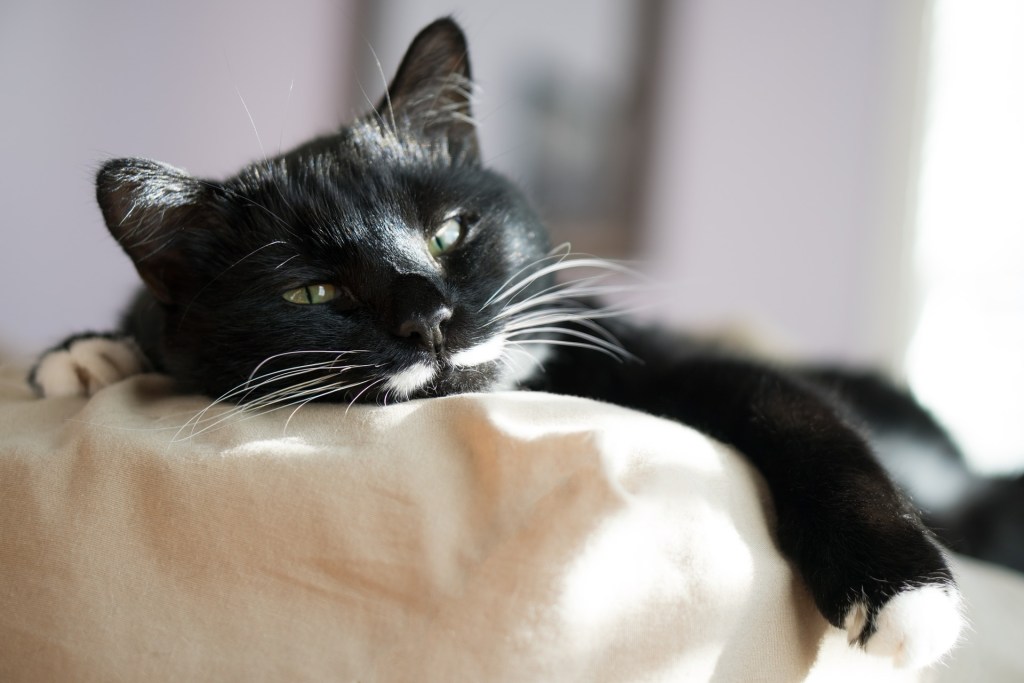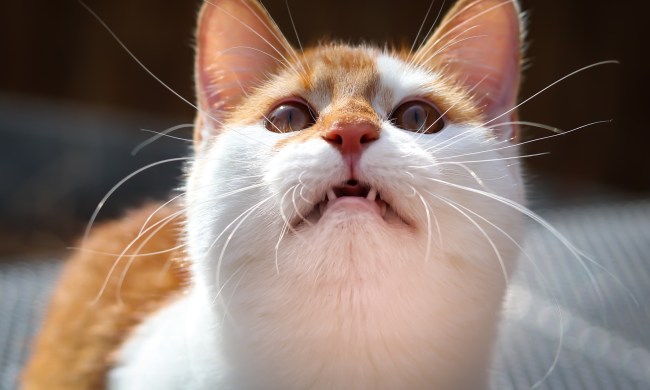Cats love having extra-cozy places to sleep, and many cats will appreciate a soft, warm cat bed. While there are plenty of cat beds available to buy, homemade cat beds add a special touch. Before you stress out, though, over the idea of making one, don’t worry — these DIY cat beds are super simple and require no sewing at all. In fact, you can make most of them with items you probably already have at home. Even your kids can help, and you can have a fun family crafting day — much to your cat’s delight.
Wooden crate bed
Cat beds don’t come much easier than this. First, find a wooden crate at your local craft store or possibly at a yard sale. Your grocery store may give you an empty fruit or vegetable crate. Look for one that will give your cat enough space to stretch out a little while still being cozy. Something measuring at least 6 inches tall is ideal.
Then, all you need is a pillow or a folded-up small blanket to transform the crate into a bed. Look for something that’s easily washable, and if you use a pillow, choose one with a removable cover for easy cleaning.
If you’re feeling crafty, you can decorate the crate to complement your home decor. Sand the wood lightly, then paint it. Consider adding decorations, like painting on your cat’s name, some fish skeletons, or even some mice.

Suitcase bed
If your cat always hops up into your luggage when you’re packing for a trip, he might appreciate this suitcase DIY cat bed. All you need is an old suitcase that you’ll no longer be using. A hard-shell case is best, and try to find a smaller case so the bed doesn’t take up too much room. If you don’t have a suitcase, you can probably find one — or even a hatbox — at a yard sale or secondhand store.
Start by opening the case and removing the cover by unscrewing or cutting the hinges. Alternatively, you can prop the cover open using a piece of wood or metal that you insert into the corners of the case. Make sure that this is secure and strong so the cover can’t fall closed on your cat.
Next, set a nice pillow or blanket inside to make a comfy bed. You can even add in a little catnip to make the bed extra enticing.
You can place this bed on the floor, but your cat might appreciate it if you put it on a stool or table so that he has a nice view of the window.

Pillow bed
You can easily make a pillow that serves as your cat’s bed, or you can make a pillow to put into the beds above. You’ll need some fleece fabric that you can find at most craft stores. Don’t worry — this pillow doesn’t require any sewing at all.
To determine how much fabric you’ll need, first decide how big you want the pillow to be. After deciding on the dimensions, add 8 inches to both the length and width. Be sure to account for the fact that you’ll need two pieces of fabric in those dimensions since one will be the front and one will be the back of the pillow. In most cases, 1 yard of fabric will be enough.
While you’re shopping, be sure to also pick up stuffing for the pillow.
To start your pillow, cut the two pieces of fleece to those dimensions you calculated. Put the two pieces on top of each other and pin them together with a few fabric pins.
Next, you’re going to cut small strips into the edges. You’ll use those strips to tie the edges together, creating the pillow. You’ll need to cut 4 inches into the edges of the pillow and space your cuts so they’re 1 inch apart. The result will be a bunch of 1-inch-wide, 4-inch-long flaps that go all around the pillow.
Once you’ve cut your flaps, remove the pins and position the two pieces of fabric so that the sides that you want to be the front and the back of the pillow are facing out. Then, tie the corresponding flap of the front panel and back panel together in a knot. Repeat this process and work your way around the pillow, tying the two panels together.
Once you’ve tied all but about five remaining flaps together, stop and stuff the pillow. You’ll want it to be firm enough to support your cat, but still soft enough to be comfy for catnaps. You can even add a little catnip to pique your cat’s interest.
With the pillow stuffed, tie up those remaining flaps and you’ll have a finished pillow for your cat to enjoy.
DIY cat beds are easier than you think
After putting effort into making your cat a nice bed, you’ll naturally want to see that he loves his special space and is ready to climb into it for a nap. But with many cats, that might not be the case. Cats are creatures of habit, and some might take a while to warm up to a new bed. You can encourage him to check out the bed by adding some catnip to it or by feeding your cat treats on and near the bed. Chances are, though, that if you put the bed in a sunny, warm spot in your home, your cat will soon discover that it’s a purr-fect sleeping spot all on his own.


